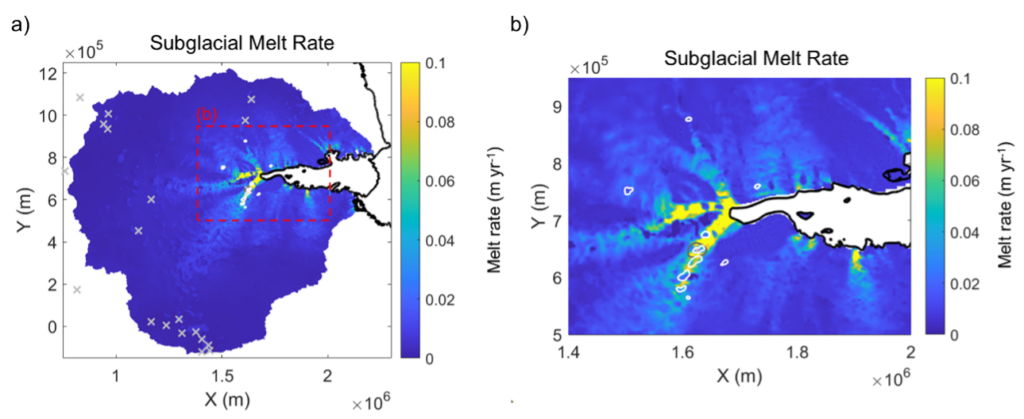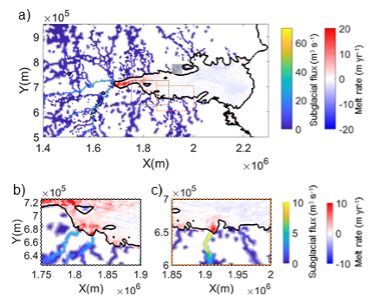Using satellite altimetry and numerical modelling to characterise subglacial hydrology beneath the Antarctic Ice Sheet
- Project by: Science Hub Team
- October 29, 2024
Melting beneath the Antarctic Ice Sheet is relatively low, but the pattern of melting and meltwater drainage is important for controlling the flow of the overlying ice. Melting occurs due to geothermal heating from the underlying bedrock and heat generated from friction as the ice slides over the bedrock. Despite its importance, subglacial melting and hydrology in Antarctica remains highly uncertain. In this new study, we have demonstrated how satellite observations and numerical modelling can be used together to greatly improve our understanding of this subglacial environment.
We calculate the volume of meltwater generated beneath the Amery Ice Shelf catchment in East Antarctica using a numerical ice-sheet model, constrained by satellite observations of ice sheet motion. We are able to resolve high melting beneath areas where the ice sheet is flowing fast, and we find that total melting is 7 giga tonnes per year, which is 50% more than suggested by previous studies.

The filling and draining of lakes at the base of the ice sheet, and ocean melting of the floating ice shelf can be detected from observations of ice-sheet surface elevation change from satellite altimetry. We use these observations to validate a model of meltwater drainage at the base of the ice sheet. We find that subglacial channels link together subglacial lakes and the focused discharge of subglacial meltwater enhances ice-shelf basal melting. These findings suggest that meltwater drainage from the base of the ice sheet may play an important role in controlling ocean melting of the floating ice shelf.

You can find more details about this research in the published article:
Wearing, M. G., Dow, C. F., Goldberg, D. N., Gourmelen, N., Hogg, A. E., & Jakob, L. (2024). Characterizing subglacial hydrology within the Amery Ice Shelf catchment using numerical modeling and satellite altimetry. Journal of Geophysical Research: Earth Surface, 129, e2023JF007421. https://doi.org/10.1029/2023JF007421
This research was carried out by Martin Wearing.

